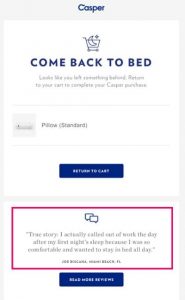Imagine this scenario: It’s your monthly client meeting and you’re prepared to discuss the usual PR wins and status updates. Instead your client drops this bombshell: he might not renew his contract. His top leadership can’t justify your monthly retainer unless they can connect your efforts to some kind of measurable advantage for the business.
What’s your reaction? Do you tell him how hard your team has worked – the many phone calls and emails launched in his honor? Or do you calmly offer a report that proves your team is an asset to his brand?
I hope you said the second option. This is the age of transparency, where demonstrating value is a mandatory part of any successful business. The days of being handed a retainer with no questions asked are long gone. Clients want to see what their money is buying them – and that’s where reports come in. By spelling out your hard work and achievements with irrefutable data, reports help you impress clients, win budget from C-suite leaders, and sign new accounts.
The truth of the matter though is that many PR teams still struggle with meaningful reporting; while digital marketing agencies have industry standards such as lead volume and CTR to report on, some PR teams buy into the fallacy that their results are too amorphous to measure. Others believe collecting and reporting data will be a burden on the team.
So here’s the reality. Thanks to great tools on the market, reporting can (and should) be easy, direct and seamless. And offering that accountability is a surefire way of pleasing clients. PR teams that don’t offer data-based reports could eventually find themselves losing credibility and accounts – but teams that deliver great reports will not only strengthen their client relationships but sharpen their PR expertise as well.
7 Steps to a Satisfied Client
The foundation of good reporting is this: understanding that public relations follows trends and patterns. In fact, your PR universe – your clients’ industries, the analysts and influencers you work with, the publications that feature your contributed content – has its own specific trends. Once you identify those, you’ll have an informed basis for creating strategies and measuring success.
With that in mind, let’s look at the seven must-haves for a great client report.
- Set benchmarks. Guesswork is for amateurs. To predict the future, assess your past activities and set benchmarks based on that performance. Include all the important variables, from outreach to awards to earned media. That historical data will tell you how to define a realistic goal and empower you to establish standards going forward.
- Use the right tools. If you’re still tracking everything in spreadsheets, that’s your choice – but you should know that technology has advanced in the PR industry and can eliminate the tedium and stress of manual reporting while offering the fast and thorough answers clients love.
- Align expectations in advance. It’s always a terrible feeling when a client asks for results on something you haven’t done. Make sure you agree upfront on what you will pursue, deliver and report on – and have that clearly defined in your system.
- Keep your eyes on the prize. Keep your client’s goals front and center. Business guru Stephen Covey has a simple quote that sums this up: “The main thing is to keep the main thing the main thing.” Sounds obvious, right? Yet many teams lose sight of this by chasing down dozens of minor distractions. Focus on the big goals and check on them frequently.
- Tailor reports to client needs. Too often, agencies try to fit all client reports into one box. Every client has different measurements for success. If you list media hits and social media activity for a client interested in foot traffic, your report will only convince them you haven’t been listening.
- Measure your efficiency along with outcomes. You want your report to prove two things: that your team has delivered great results and that you’re the right team to keep working the strategy. To that end, show you allocated your budget and resources for maximum return. What did you expect and what was the return? Clients love an efficient team on top of their game, so demonstrate that in the report.
- Showcase your work. Results don’t always reflect the effort that went into them. Maybe you spent considerable time writing campaign pitches and articles that didn’t spark much interest. That happens sometimes. When it does, your best option is to report on the campaign components, the time spent and the result. If you can identify the reason the goal wasn’t met, report on that too. Your client will know the effort was there.
Ultimately a good report benefits both your team and your clients. Top leaders will enjoy connecting their PR budget to results; you’ll understand which missteps to avoid and which future opportunities to seize. A knowledgeable team is an optimized team – and by refining your client reports now, you’ll take both your performance and your reputation to a higher level.
(188)
Report Post






